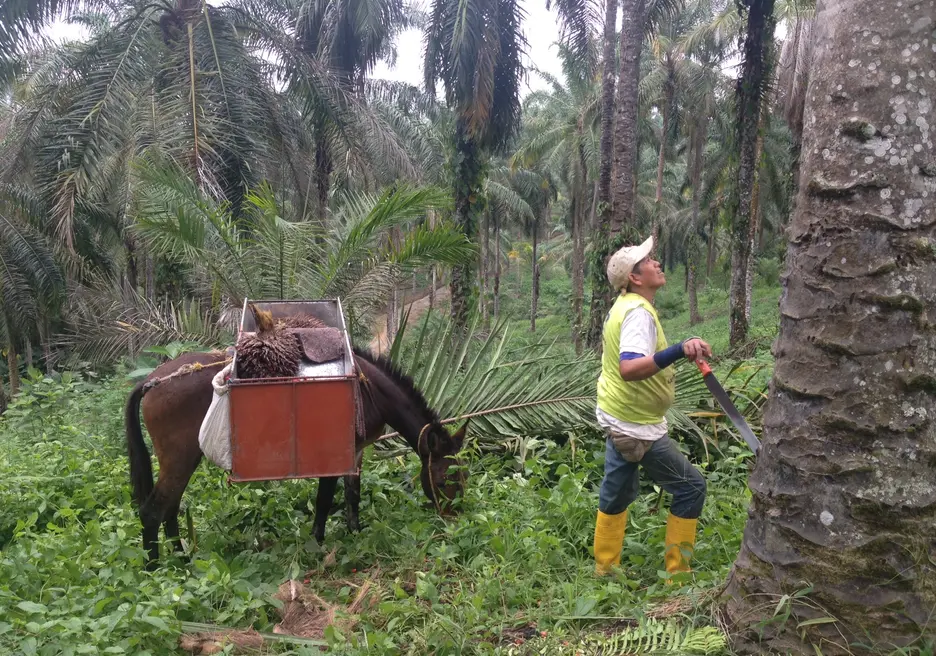Four Ways to Get the Most out of Palm Oil in Latin America and the Caribbean

 Colombia’s plans for palm oil production require three million hectares of plantations. Other big growth countries include Ecuador, Peru, Brazil, Honduras, Guatemala and Costa Rica. Palm oil plantations can drive deforestation – just in May the Monitoring of the Andean Amazon project found that a company had cleared 9,400 hectares of Amazonian rainforest to make way for oil palm.
Colombia’s plans for palm oil production require three million hectares of plantations. Other big growth countries include Ecuador, Peru, Brazil, Honduras, Guatemala and Costa Rica. Palm oil plantations can drive deforestation – just in May the Monitoring of the Andean Amazon project found that a company had cleared 9,400 hectares of Amazonian rainforest to make way for oil palm.
Are there ways to bolster the environmental and social sustainability of the industry?
Here are four proposals:
First, the benefits from palm oil growth would be more equitably distributed if small farmers owned and managed more plantations. Small farmer control avoids clearings of thousands of hectares at once, and small farmers tend to plant in mosaic patterns, preserving some of the original environment and increasing agrobiodiversity.
Ownership varies greatly by country. According to Mr. Juan Luis Dammert, PhD Candidate at Clark University, “In Peru there are two groups with very large plantations that account for more than a third of all cultivated areas. The rest is based on associations of smallholders. In the case of Ecuador and Colombia you see a greater number of mid-size companies.”
The problem here is that starting a plantation is extremely expensive, requiring thousands of dollars of investment without significant returns during the first few years. Without access to credit, palm oil is untenable for farmers that need regular income. Working with Banco de Guayaquil in Ecuador, IDB is working to provide credit to small palm oil producers.
A second solution lies in better ecological planning. Mostly because of cattle grazing, Latin America has millions of hectares of deforested and degraded land. The ecological value of this land is low, so planting palm oil or other crops in degraded land doesn’t have the same negative consequences for biodiversity and ecosystem services.
It seems like an obvious strategy, but unfortunately one that hasn’t worked very well with oil palm or other crops. Land is degraded for a reason: it’s being used by people. Dr. Patrice Levang of CIFOR says, “Large areas that have been cleared like that have been appropriated by thousands of people. If you try to take them [for oil palm development], all these people will ask for compensation.” In most cases, it’s simply cheaper to clear forest. Until policy better protects forests and incentivizes production on non-forested land, oil palm and other crops will threaten forests.
Thirdly, palm oil has a certification scheme to guarantee that certified palm oil has met certain sustainability criteria. The Roundtable on Sustainable Palm Oil (RSPO) guarantees that certified palm oil has not come from recently deforested land, does not involve child labor, and other standards. 3.4 million hectares of oil palm plantations are RSPO certified worldwide, accounting for 20% of palm oil production. RSPO is growing rapidly in Latin America, with the certified volume of palm oil expected to grow by 226% from 2014 to 2015.
Like other solutions, RSPO is not without its own problems. My recent post explored the issues.
Lastly, there is personal responsibility. All of us as consumers recognize the impact that food production has on the natural environment. We can demand RSPO certified palm oil. High demand will create a large price premium. In 2013, nearly half of RSPO certified palm oil was sold as conventional palm oil without a price premium.
Some environmental advocacy groups have recently called for palm oil bans. While palm oil’s sins make it easy to sympathize with this sentiment, eliminating palm oil would not solve any problems. Global consumers demand ubiquitous, cheap oil, and if oil palm trees weren’t displacing forests, then soy, rape seed, or another oil crop would.
That said, palm oil is increasingly threatening Latin America’s natural resources and without a transformation of our food production, governance systems and consumer culture, more destruction is certain. Better agricultural and environmental planning from government ministries and increased leadership by the private sector can help strengthen the sustainability of the palm oil industry.
A different version of this article was first published by ensia.com.
LIKE WHAT YOU JUST READ?
Subscribe to our mailing list to stay informed on the latest IDB Invest news, blog posts, upcoming events, and to learn more about specific areas of interest.
Subscribe



